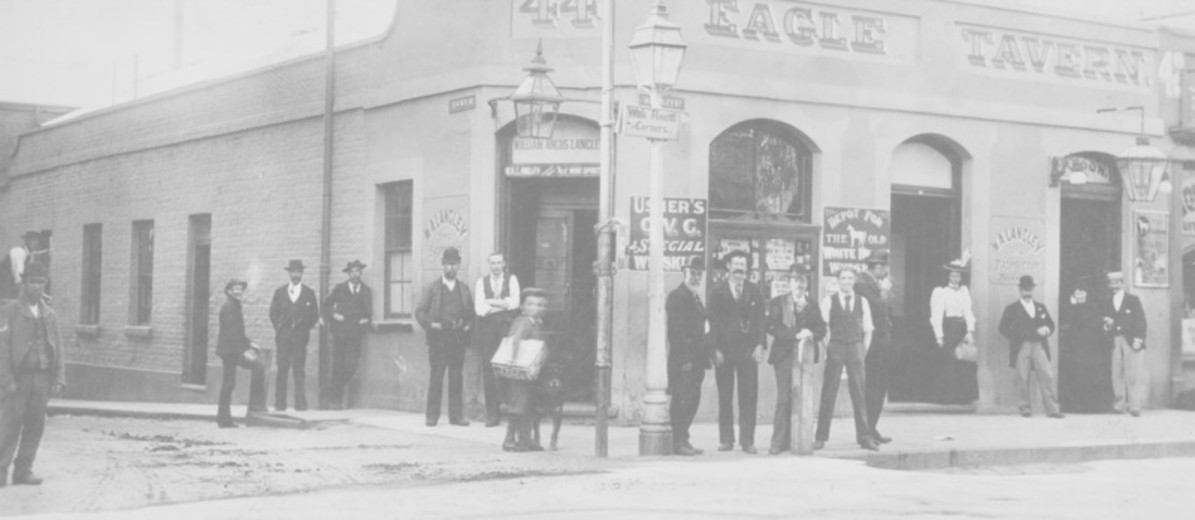Subject
ContributeJM Freeland characterises Australian pubs as among ‘the most socially significant, historically valuable, architecturally interesting and colourful features of Australian society’ (Freeland 1977, p. 1). South Australia’s pubs are no exception. Indeed, their vital role is reflected in the fact that a measure for the ‘Granting of Licences, regulating the sale of Wine, Beer, and Spirituous Liquors, for the Prevention of Drunkenness, and the Promotion of Good Order in Public Houses’ was passed in February 1837 as the fourth law enacted in the new colony.
Hotels in South Australia
About 1300 general hotel licences have been issued since 1837, and in 2001 there were about 655 hotels within the state; the number of pubs within the city of Adelaide fell from 128 in 1915 to some 60 in 2001. Four new city hotel licences were granted between1989 and 2001, the first city licences to be issued since the Old Lion Hotel in North Adelaide gained its licence in 1881.
While some early pubs were substantial structures with several public rooms, away from main city streets the pub could be a private home with one room set up as a bar and one for overnight guests. From the 1850s pub facades began to resemble shop fronts, but interiors changed little until the late 1860s when the Licensing Bench demanded minimal room sizes and numbers of rooms. Pub styles reached their zenith between the late 1870s and 1910, by which time most pre-1860 pubs had been rebuilt or new ones established. Usually Italianate, with shady balconies and verandahs with balustrades of ornate cast iron, these hotels have contributed significantly to Adelaide’s townscape.
Located on major transport routes, in new towns, at river crossings, major junctions, mining and railway towns, ports and seasides, pubs were often the first business in a new township and the last to close when a town was abandoned. They have provided venues for religious worship, theatrical entertainment, meetings small and large, public and private, balls, banquets, fetes and sporting events, and have been used as school classrooms, commercial rooms for travelling salesmen, electoral polling places and venues for inquests. As well as planned events by both publican and the community, pubs are renowned for unplanned interaction between regulars and strangers.
Restrictions on Pub life
While barmaids already employed were allowed to continue working, from 1908 until 1967 no woman was permitted to serve in a public bar unless she was directly related to the publican. Unsurprisingly, the remaining few barmaids became tourist attractions until the last retired in 1936. Similarly, no woman could be served a drink at the bar. Early closing, imposed between 1916 and 1967 and lasting longer than in any other state, was aptly called the ‘six o’clock swill’. Pubs, literally awash with beer as patrons in various stages of inebriation jostled to buy drinks before closing time, became ‘no place for a woman’. Illegal after-hours trading and gambling spawned ‘nit keepers’, ‘nits’ and ‘cockatoos’ who warned of approaching police. Since the introduction of ten o’clock closing by Premier Don Dunstan on 27 September 1967, hotels have endeavoured to recapture their pre-1916 community status as places where all sexes can work and play together.
Some notable pubs in Adelaide
The Edinburgh Castle in Currie Street, Adelaide, retains the oldest licence (1837). The oldest intact hotel structure in the state is the former Beresford Arms in Gilles Street, built in 1839. The most revered hostelry was the South Australian Hotel on North Terrace that began as a licensed pub in March 1879. Its closure and demolition in 1971 were accompanied by storms of protest and much sadness.
Media
Add mediaImages

Image courtesy of the State Library of South Australia, SLSA: B 7093, public domain.

Image courtesy of the State Library of South Australia, SLSA: B 1071, public domain


CommentAdd new comment
Quickly, it's still quiet here; be the first to have your say!